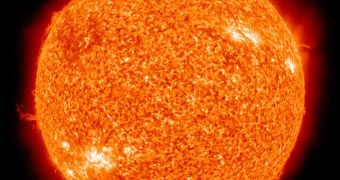At a Maryland Space Business Roundtable luncheon held recently, the director of the NASA Goddard Space Flight Center (GSFC) in Greenbelt, Christopher Scolese, told SpaceNews that the launch of the American space agency's Magnetospheric Multiscale Mission (MMS) might be delayed by a full year.
If it comes to pass, the responsibility for this delay will fall on the federal government, which experienced a shutdown in October 2013. This event caused a series of severe repercussions for a wide variety of projects that depended on federal funding, not just in space exploration, but across the board.
Scolese, whose Center manages the MMS mission for NASA Headquarters in Washington DC, told the news outlet that the spacecraft were currently undergoing thermal vacuum testing at the Naval Research Laboratory (NRL), in Washington. NASA put $800 million (€581 million) in this project so far.
Before the partial government shutdown last year, the mission was supposed to launch on November 26, 2014, and consist of four identical spacecraft flying in a tetrahedral formation. Now, the launch date may be pushed back “anywhere from early 2015 to later than that,” Scolese said.
The worst-case scenario, he added, was for the mission to launch sometime in 2016. “I don’t know. We’re still in negotiations with United Launch Alliance, [but] it’s not going to be this year, I’m pretty confident of that,” he added. ULA is the provider of the Atlas V rocket the MMS requires to take off.
The Alliance is a collaborative effort between the Boeing Company and Lockheed Martin that supplies most delivery systems for defense and intelligence payloads in the United States. Atlas V rockets are also used for larger NASA missions, such as the rover Curiosity currently on Mars.
The MMS will most likely launch from the Cape Canaveral Air Force Station, in Florida.
The purpose of the mission is to study the magnetosphere surrounding Earth from four different perspectives. The spacecraft will focus on a series of processes that occur in many astrophysical plasmas, including magnetic reconnection, turbulence, and energetic particle acceleration.
The main issue with launching the MMS this year is that ULA no longer has any open slots in its launch manifest. “There are still missions out there that aren’t as far along as MMS, and if they can’t make it, maybe we can fit in that slot,” Scolese concluded.

 14 DAY TRIAL //
14 DAY TRIAL //